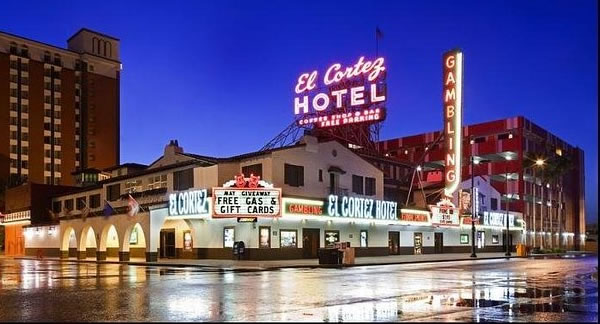

Old Las Vegas Mormon Fort, located at 500 E. Washington Ave., was established in 1855 along a creek with free-flowing water and was the first non-native settlement in the valley. The fort has undergone many transformations, starting as a Mormon settlement, turning into a ranch for two families, and eventually becoming a railroad property. Visitors can tour the state park for $3 and view numerous historical artifacts, including pottery remnants and stone tools, according to the park service.
The Huntridge Theatre, a rare property registered in the national, state, and local historic registries, was once a favorite venue of celebrities like Judy Garland and Frank Sinatra. The first non-segregated movie house in Las Vegas, it hosted performances by local stars like The Killers and international acts like Foo Fighters and Red Hot Chili Peppers before closing in 2004. Dapper Companies bought the property two years ago and plans to restore its former glory, including lighting the iconic marquee, which had been dormant for a long time. The developer, J Dapper, aims to complete the renovations within the next two years and hopes to include an art exhibit highlighting the theater's history.
The Moulin Rouge, located on Bonanza Road in the Historic Westside, was Las Vegas' first racially integrated hotel-casino, opening in 1955. It hosted Black entertainers who could perform but not stay at other local resorts and held a meeting in 1960 that led to the desegregation of downtown Las Vegas and the Strip. Despite being listed in the national and local historic registries, the property has seen better days, and numerous efforts to redevelop it over the years have not fully materialized.
The El Cortez Hotel & Casino, downtown's first major resort built in 1941, features a Spanish Colonial Revival design popular across the country around World War II. The property was approved for listing in the National Register of Historic Places a decade ago and is mostly unchanged throughout the decades. Visitors can still lodge and gamble at the historic casino.
The Las Vegas Academy, the city's first high school built in 1931, is a magnet school that serves about 1,700 students annually. The school's original main building and gym downtown maintain their Art Deco design and are still operational. While Las Vegas High School moved to a new location, the facility rebranded as Las Vegas Academy of the Arts and is listed in the National Register of Historic Places. Its alumni include Richard Bryan, former Nevada governor, and former U.S. senator.
Floyd Lamb Park at Tule Springs, a 680-acre northwest Las Vegas Park, not only offers a peaceful oasis with lakes and trails but also features several significant historic buildings. Native Americans were drawn to the area by its springs, which later became a working ranch. An adobe hut, believed to have been built in 1917, is considered part of the ranch's history. In the 1940s, the ranch hosted people in Nevada who wished to establish residency to obtain a divorce in the state. The park, listed in the National Register of Historic Places and the Las Vegas Register of Historic Places, also features the Foreman's House, constructed in the 1940s and now serving as the park's visitor center. The park is located at 9200 Tule Springs Road.